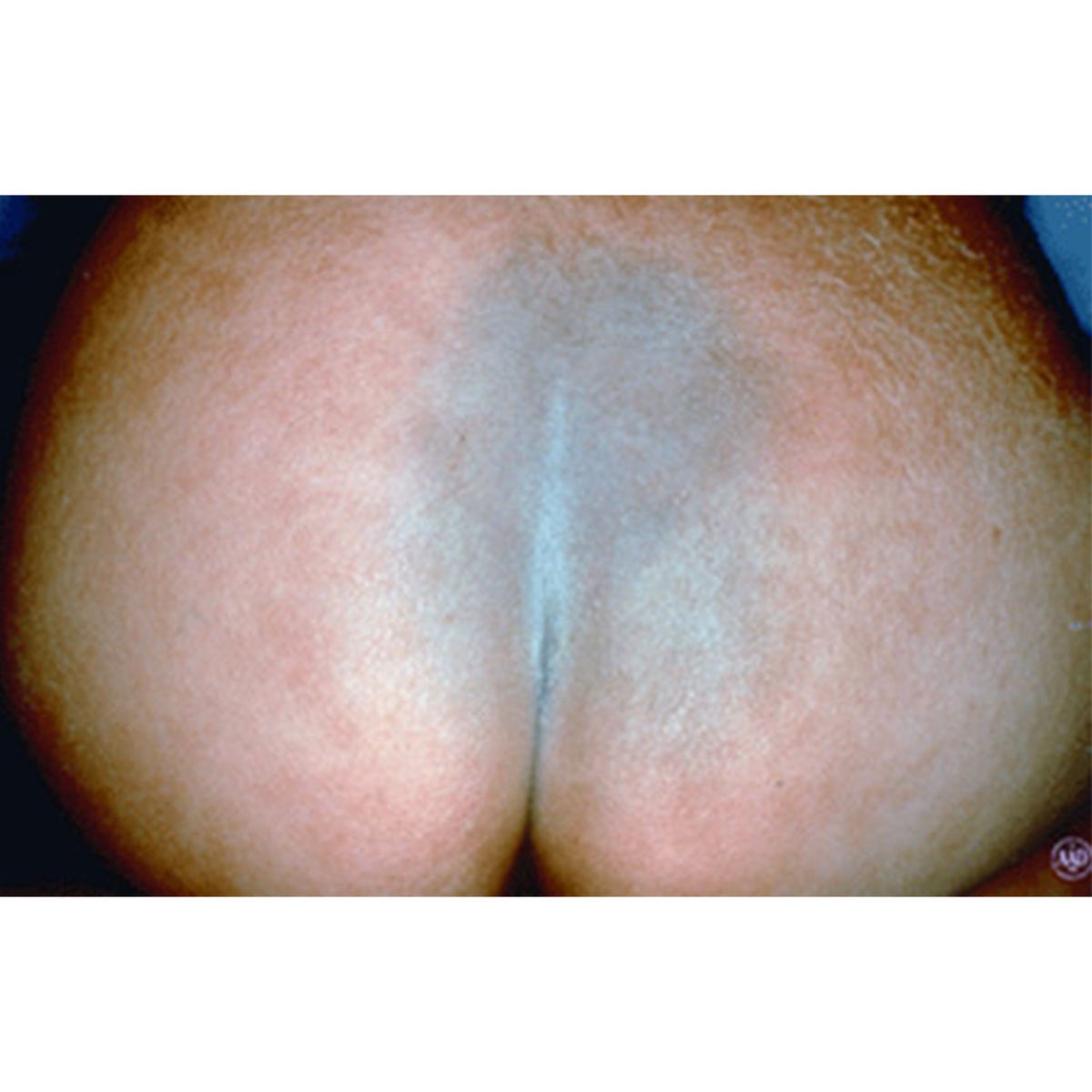


Congenital dermal melanocytosis has a few different symptoms, according to Mount Sinai, including:
- Blue or blue-gray spots on the back, butt, base of spine, shoulders, or other areas of the body
- Spots that are flat with an irregular shape and unclear edges
- Spots that have a normal skin texture
- Spots that are two to eight centimeters wide or larger
What causes a ‘blue butt,’ and who usually gets these birthmarks?
The unique color of congenital dermal melanocytosis is from a collection of melanocytes—cells that make the color of the skin—in the deeper layers of the skin, according to Mount Sinai.
While the AAD says that congenital dermal melanocytosis is most common in people of Asian descent, it happens in all races. However, it's least common in people with white skin.
Most cases of congenital dermal melanocytosis appear on a child's lower back or butt, but they can technically show up anywhere on the skin, the AAD says. And, Wu is right, this birthmark usually goes away over time, with the AAD saying that it usually disappears by the time is a child is three to five years old.
To get our top stories delivered to your inbox, sign up for the Healthy Living newsletter
Source: Read Full Article